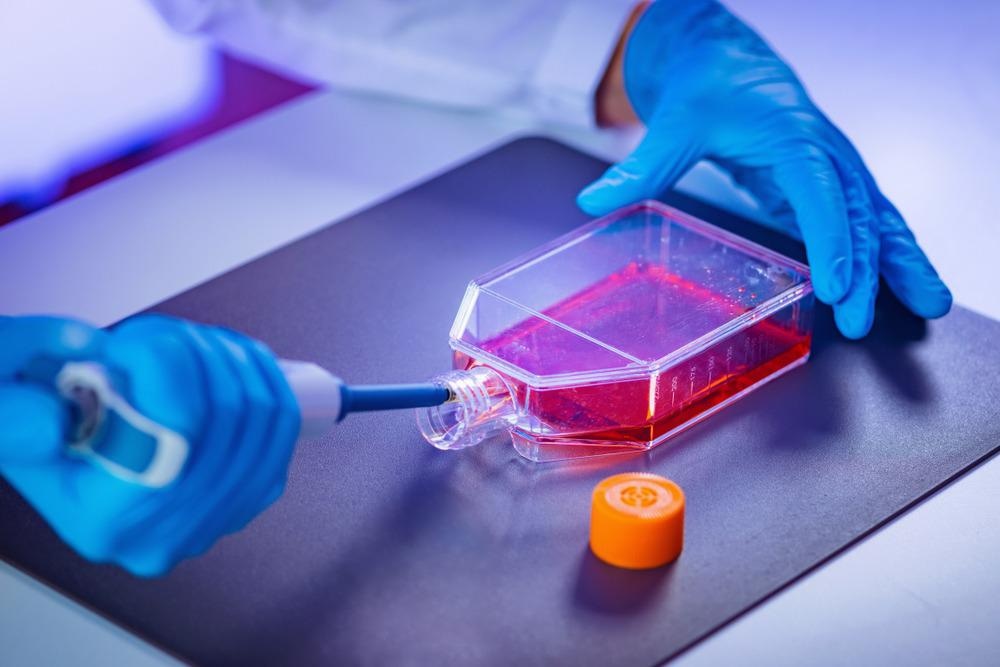In an article recently published in ACS Applied Biomaterials, the authors summarized green nanocomposites and interpreted their uses in wound dressing and skin tissue engineering.

Study: Green Polymer Nanocomposites for Skin Tissue Engineering. Image Credit: Microgen/Shutterstock.com
The article emphasized the biological and mechanical properties required by the skin cells when introduced onto the scaffold. In this context, the latest trends in skin tissue fabrication and synthesis of bionanocomposites and their mechanistic features are discussed.
Bio- or Green Composites/Nanocomposites
Bio- or green composites/nanocomposites are natural polymers or green ingredients reinforced with additives/nanoparticles/fillers to attain recyclability, eco-efficiency, sustainability, and accessibility.
These green composites/nanocomposites are promising candidates in biomedical applications since they mimic the properties of a living system, such as biodegradability and biocompatibility. Moreover, green composites/nanocomposites have greater demand over synthetic polymers in biological systems due to environmental concerns.
Bionanocomposites have many favorable properties for applications in cell or tissue engineering, wound dressing, and tissue reconstruction systems. The bionanocomposite’s hydrophilicity is the key to its application in cell and tissue engineering. The non-corrosiveness, renewability, and toughness make bionanocomposites a suitable alternative to ceramics and alloys in bone tissue engineering. For example, the implantation of keratin-based biomaterials can bring about tissue stability.
Due to the complexity of skin structure, it is challenging to tailor a single scaffold with lots of different properties to impart wound healing or skin regeneration. In this context, polysaccharide-based bionanocomposites and protein-based bionanocomposites, individually and in combination, have received considerable attention from scientists for their application in the field of skin tissue engineering due to their ability to mimic the physicochemical and biological properties of extracellular matrix (ECM).
Green Nanocomposites in Skin Tissue Engineering
In the present work, the authors classified green nanocomposites and highlighted their role in skin tissue engineering. They discussed the mechanical and biological properties of the green nanocomposites and reviewed a few studies that highlight their applications as delivery platforms for skin tissue engineering.
Mechanical and Biological Properties of Green Nanocomposites for Skin Tissue Engineering
Although tailoring the structural aspects of synthetic polymers can enhance their mechanical properties, synthetic polymers suffer from low cytocompatibility and bioactivity, which do not permit their application in cell and tissue engineering. However, combining synthetic polymers with natural biomaterials enhances their mechanical properties, biocompatibility, and hydrophilicity. In this context, nanoscale biomaterials are a suitable option since they can mimic the constituents of human tissue and facilitate better cell activities owing to the high surface-to-volume ratio. The nanoscale biomaterials also help in enhancing thermal stability and mechanical strength.
Previous studies reveal that adding nanomaterials in precise quantities to the native ECM can increase its antibacterial activity, improve mineralization, and stimulate calcium deposition and cell adhesion. Furthermore, the addition of nanomaterial-based polymer to ECM helps in enhancing the drug delivery by tuning the drug release at the target site.
Combining decellularized ECM matrix with carbon nanomaterials like ceramic nanomaterial improves tolerability in harsh environments. However, previous studies demonstrated that the decellularization method of ECM majorly impacts the mechanical properties of the resultant scaffold, especially in skin tissue decellularization. Hence it is crucial to opt for an appropriate decellularization method before adding nanomaterial.
In biological systems, synthetic biopolymers have limitations such as acidic byproduct production, low cell recognition, and lack of active binding sites that affect phenotypic expression. To this end, natural biopolymers like polysaccharide-based bionanocomposites have received researchers’ attention in scaffold fabrication. Nanoscale cellulose has good biological, mechanical, and chemical properties compared to its synthetic counterpart. Furthermore, among polysaccharide-based green nanocomposites, chitin and alginate are recognized as potential options in skin engineering.
Although artificial skin is available in the skin tissue engineering market, it lacks the mechanical, antibacterial, and angiogenesis properties required by the skin. Hence, the addition of nanoparticles to the biomaterials can accelerate angiogenesis effects. Thus, polysaccharide-based biomaterials have an advantage in skin engineering.
Scope and Conclusion
Although biomaterials like proteins and polysaccharides can greatly mimic ECM structure with good biological properties, they lack the required mechanical properties. In contrast, synthetic polymers have good mechanical properties and thermal stability but lack the biological properties required in skin tissue engineering. Moreover, synthetic polymers cannot meet the demand for antibacterial properties in tissue engineering.
Nanoparticles can be incorporated to bring about antibacterial properties in bionanocomposites, but their toxicity mechanism studies are critical. Further, vascular tissue engineering and lymphatic vessel regeneration need green nanocomposites since the existing scaffolds do not support sufficient recovery time.
Considering all the above aspects, scientists are scouting for a skin scaffold that can provide a safe media for seeded cells. Further, there is also a need for controlled release systems made of green nanocomposites with good mechanical, biological, and thermal properties.
Reference
Shokrani, H., Set al (2022) Green Polymer Nanocomposites for Skin Tissue Engineering (2022). ACS Applied Biomaterials https://pubs.acs.org/doi/10.1021/acsabm.2c00313
Disclaimer: The views expressed here are those of the author expressed in their private capacity and do not necessarily represent the views of AZoM.com Limited T/A AZoNetwork the owner and operator of this website. This disclaimer forms part of the Terms and conditions of use of this website.